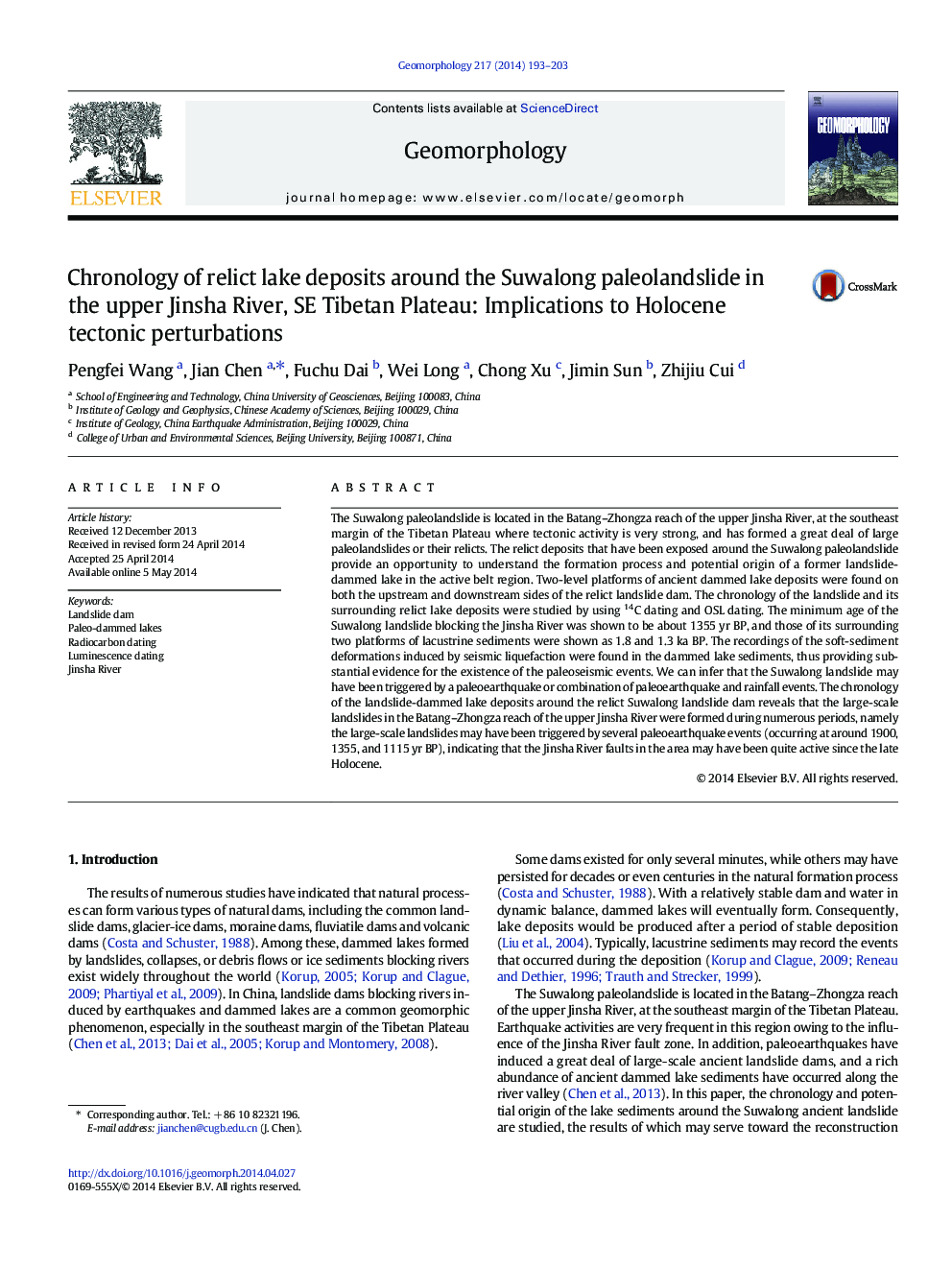| کد مقاله | کد نشریه | سال انتشار | مقاله انگلیسی | نسخه تمام متن |
|---|---|---|---|---|
| 4684567 | 1635432 | 2014 | 11 صفحه PDF | دانلود رایگان |
• We investigated the geomorphic characteristics of the relict deposits.
• The chronology of the Suwalong landslide and relict lake sediments were studied.
• The soft-sediment deformation indicates the existence of paleoseismic events.
• The chronology reveals that the major paleolandslides formed in multiple periods.
The Suwalong paleolandslide is located in the Batang–Zhongza reach of the upper Jinsha River, at the southeast margin of the Tibetan Plateau where tectonic activity is very strong, and has formed a great deal of large paleolandslides or their relicts. The relict deposits that have been exposed around the Suwalong paleolandslide provide an opportunity to understand the formation process and potential origin of a former landslide-dammed lake in the active belt region. Two-level platforms of ancient dammed lake deposits were found on both the upstream and downstream sides of the relict landslide dam. The chronology of the landslide and its surrounding relict lake deposits were studied by using 14C dating and OSL dating. The minimum age of the Suwalong landslide blocking the Jinsha River was shown to be about 1355 yr BP, and those of its surrounding two platforms of lacustrine sediments were shown as 1.8 and 1.3 ka BP. The recordings of the soft-sediment deformations induced by seismic liquefaction were found in the dammed lake sediments, thus providing substantial evidence for the existence of the paleoseismic events. We can infer that the Suwalong landslide may have been triggered by a paleoearthquake or combination of paleoearthquake and rainfall events. The chronology of the landslide-dammed lake deposits around the relict Suwalong landslide dam reveals that the large-scale landslides in the Batang–Zhongza reach of the upper Jinsha River were formed during numerous periods, namely the large-scale landslides may have been triggered by several paleoearthquake events (occurring at around 1900, 1355, and 1115 yr BP), indicating that the Jinsha River faults in the area may have been quite active since the late Holocene.
Journal: Geomorphology - Volume 217, 15 July 2014, Pages 193–203
